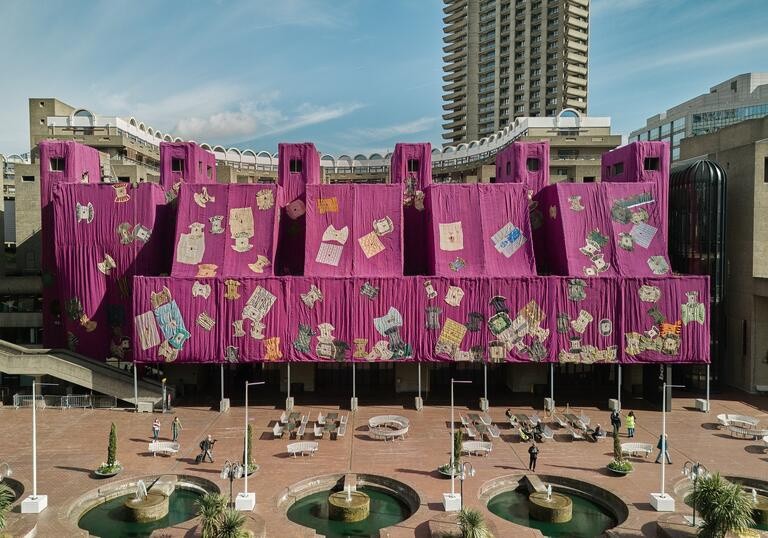Last Wednesday, April 10, visitors of Barbican's famed Lakeside Terrace were surprised as the mainstay London brutalist structure was draped with pink and purple bespoke woven cloth spanning thousands of square meters.

About Ibrahim Mahama's 'Purple Hibiscus'
The creative culprit behind the gigantic artwork? Ghanaian artist Ibrahim Mahama. He modeled the piece after its namesake flower: "Purple Hibiscus," and executed his idea alongside hundreds of craftspeople hailing from Ghana's city of Tamale.
According to the Barbican's about page of the artwork, the piece was "woven and sewn by hand" to perfectly fit the rugged and edged design of its building and has been embroidered with a hundred 'batakaris,' traditional robes worn by Ghanaian kings.
These clothing were typically safeguarded by families over generations and thus not only offer significant material value but also possess immense cultural relevance as exemplified by the intergenerational knowledge that is tied to it.
Mahama infused his own deep interest in the "lives" of textiles like these and explores through his artwork the invaluable "historical memories" that they carry.
The piece is part of the Barbican's larger exploration of the power that textiles, fiber, and thread-centered works possess in their exhibition: "Unravel: The Power and Politics of Textiles in Art."
In this major group showcase, 50 international and intergenerational artists utilize the medium of textiles to "weave" a story revolving around "power, resistance, and survival," combatting the root narratives of "violence and imperialism."
The show opened last Feb. 13 and will continue through May 26, and is open from 10 AM to 6 PM local time every Saturday to Wednesday; from 10 AM to 8 PM every Thursday and Friday; and from 12 PM to 6 PM every Bank Holidays.
Tickets start at £18. For more information, click here.